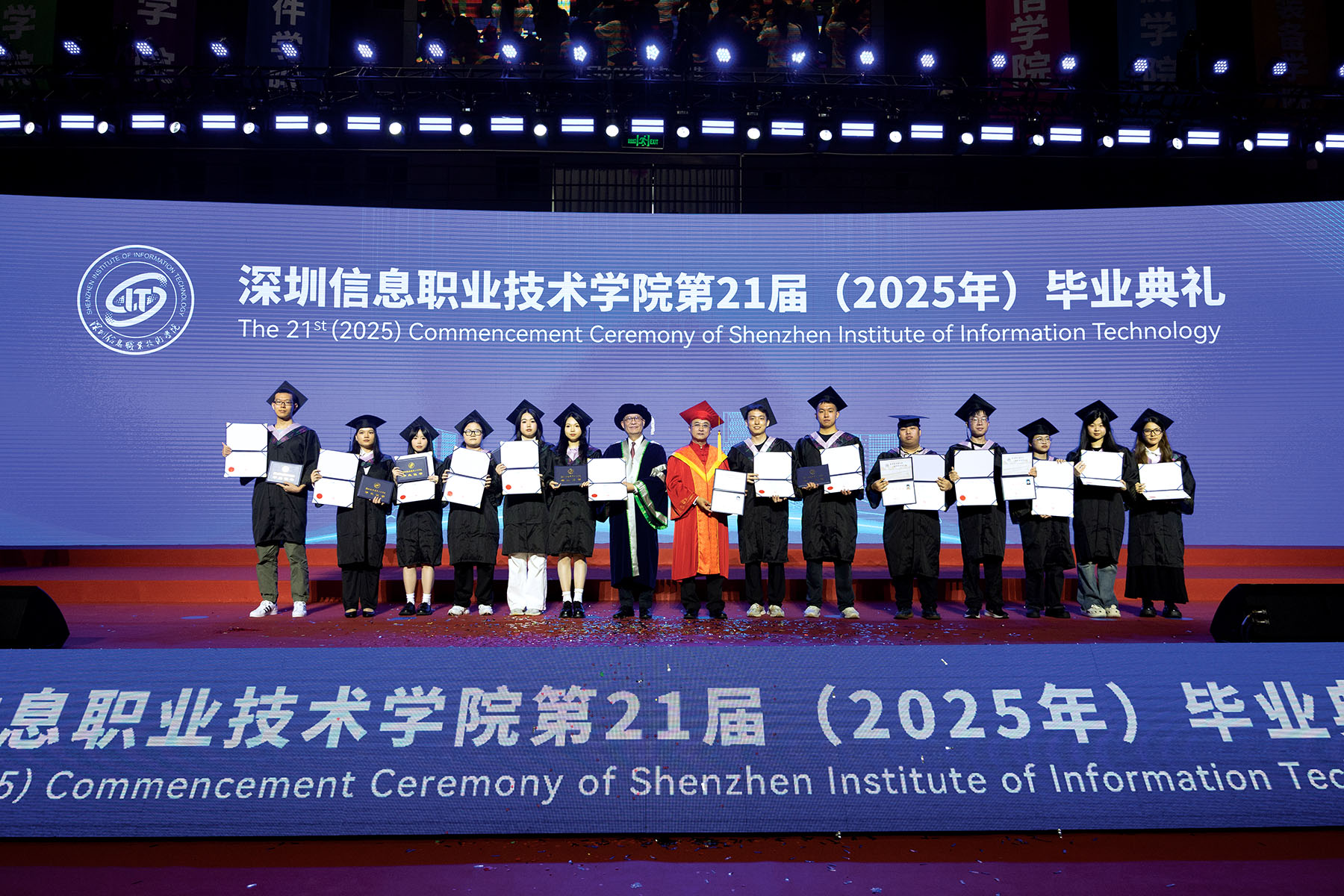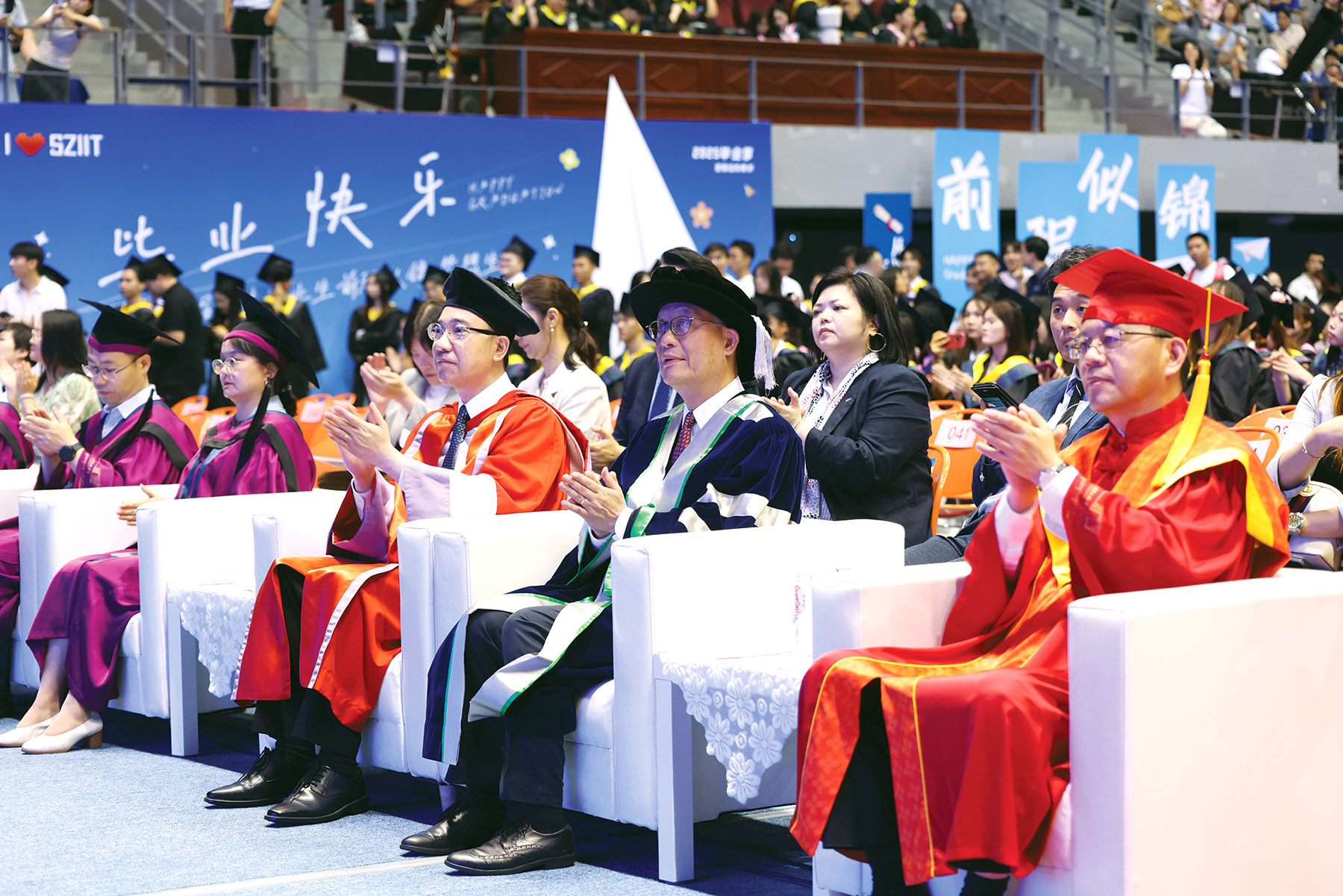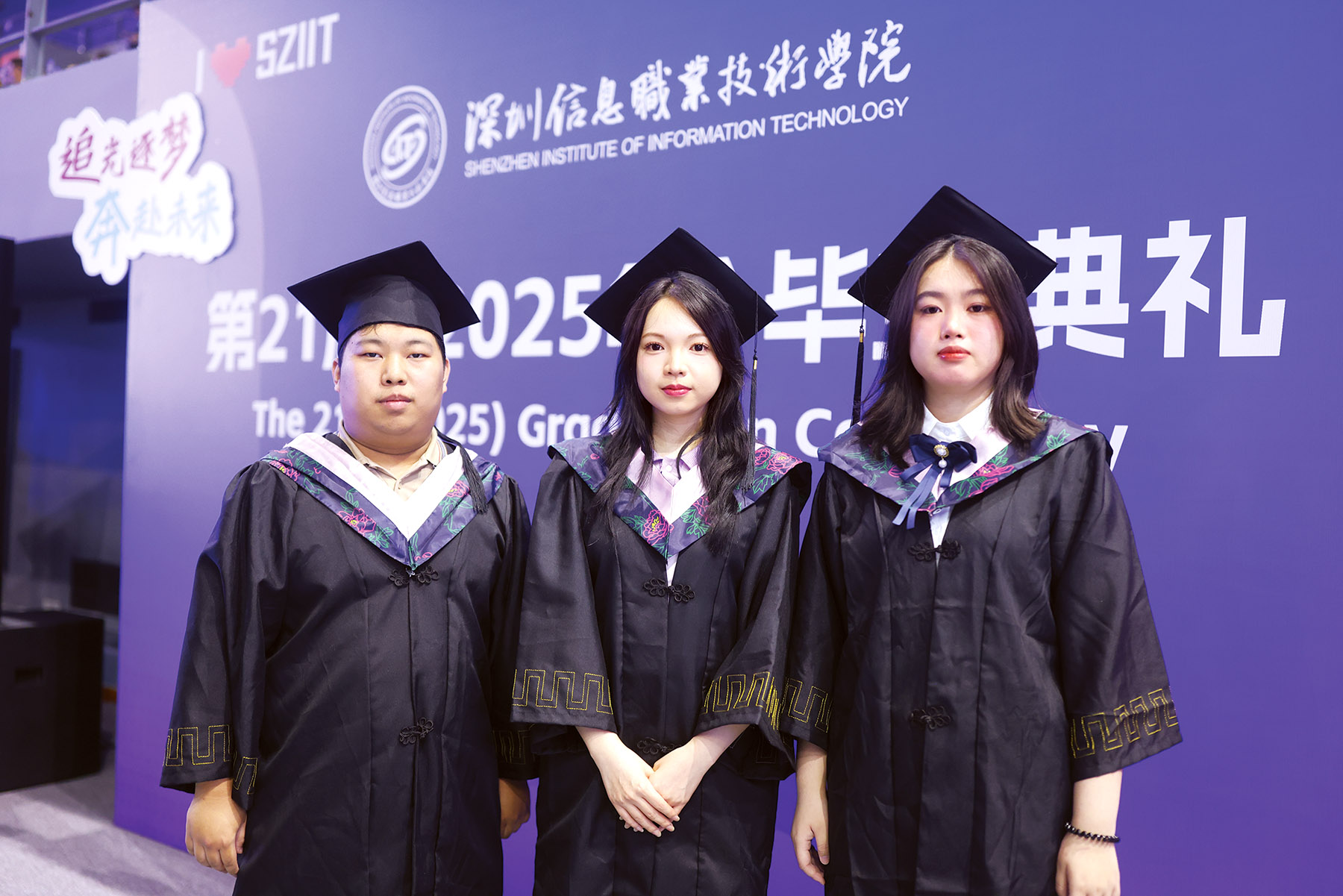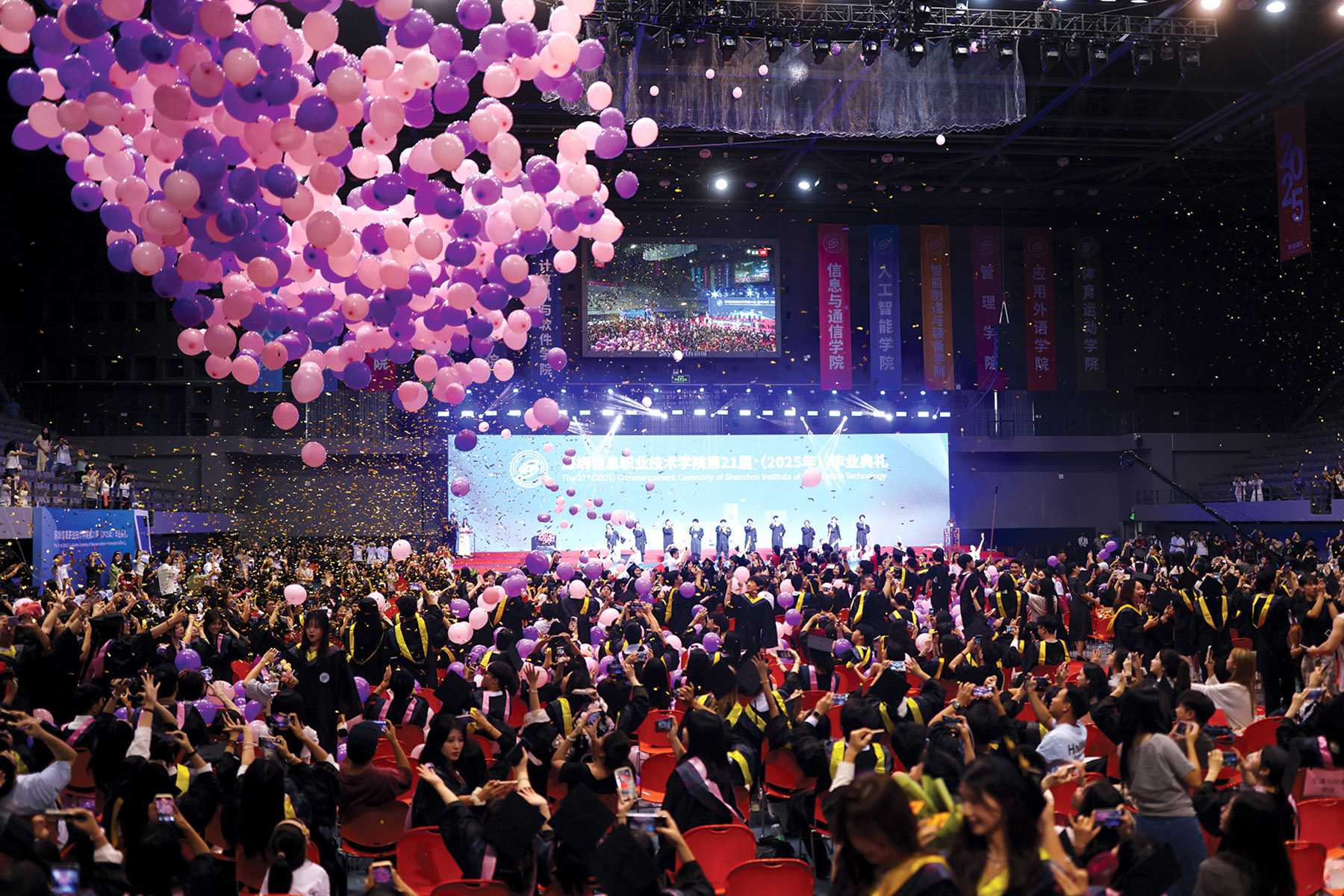Graduates of the Hong Kong-Shenzhen dual-diploma program are equipped with targeted skills and confidence in the future

For Feng Yue, it was beyond her imagination to be able to immerse herself in school life in the Hong Kong Special Administrative Region through a cross-boundary higher vocational education program.
“I was attracted by the words ‘Shenzhen-Hong Kong cooperation’ when coming across an enrolment guide for the national college entrance exam (or gaokao) three years ago,” said Feng, who has just completed a dual-diploma program in tourism and hospitality.
Jointly run by the Hong Kong Metropolitan University Li Ka Shing School of Professional and Continuing Education (HKMU LiPACE) and the Shenzhen Institute of Information Technology (SZIIT), the program took Feng on a unique cross-boundary learning experience.
Embarking on the three-year educational journey with one year of business English courses at SZIIT, followed by one and a half years of tourism and hospitality studies at HKMU LiPACE, Feng completed her studies after a four-month internship in Shenzhen, earning two separate diplomas from HKMU LiPACE and SZIIT.
READ MORE: HKMU LiPACE pioneers cross-boundary vocational education program
During a graduation ceremony held at SZIIT’s grand hall on June 28, Feng, along with her 13 classmates, shared the joy and pride of their achievement, becoming the program’s first batch of graduates.
“I wanted to take studying in Hong Kong as a platform to push the boundaries of my own capabilities,” she told China Daily.
Considering developing her career in Hong Kong, Feng pointed out that the bilingual learning environment could help her become more familiar with the local culture and give her an advantage when pursuing further studies and employment.
As a public institution for technological and vocational education and training (TVET), SZIIT is renowned for its strength in information and communications technology (ICT), offering 54 programs across a wide range of disciplines, including artificial intelligence, blockchain technology, robotics, microelectronics, business administration, digital media and physical education.
Meanwhile, HKMU LiPACE specializes in vocational and professional education and training (VPET), providing 16 higher diploma programs in areas such as healthcare, design, tourism, pet care and engineering to keep pace with market trends and meet industry demands for talent. LiPACE also maintains a strong collaboration network with over 20 Chinese mainland higher vocational institutions and nearly 30 overseas colleges and universities.

Milestone collaboration
Following a memorandum of understanding in 2021, this cross-boundary initiative is the culmination of four years of work and partnership between the two institutes. It is the first such educational collaboration between the mainland and the HKSAR, with each student receiving two diplomas — one from each institute.
“After the Outline Development Plan for the Guangdong-Hong Kong-Macao Greater Bay Area was launched in 2019, the Guangdong provincial government was tasked with promoting education cooperation within the GBA, with Shenzhen serving as a pilot city,” Dean of HKMU LiPACE Benjamin Chan Tak-yuen told China Daily.
According to the development plan, higher education institutions in the Greater Bay Area are encouraged to jointly develop academic programs, and promote cooperation in vocational education and the mutual recognition of academic credits for specific courses.
This pioneering cross-boundary education model aims not only to enhance students’ academic skills and employability, but also to break new ground in mutual recognition of academic qualifications across the region.
“Our cooperation with HKMU LiPACE has opened up a new channel for the mutual recognition of academic qualifications and students’ abilities between Shenzhen and Hong Kong,” SZIIT President Wang Hui said during an interview.
Describing the collaboration as “an important project of the future”, he said he believes this program complements the strengths of Shenzhen and Hong Kong, fostering a synergy in the development of the Greater Bay Area.
Wang also voiced his hope that both schools will expand the program and continue to promote people-to-people exchanges.
“Through such a cooperative project, mainland students can be exposed to the advanced development in Hong Kong and broaden their horizons as the city is at the forefront of various industries. We also hope that more Hong Kong students will come here to experience the rapid changes on the mainland,” he said.

Future pathways
Another graduate, Fang Yuxin, shared that her three years of study made her a more independent learner.
“In the entire learning process in Hong Kong, everything was taught in English. I needed to listen attentively to teachers without instant translation,” Fang recounted.
She said the program was conducive to her further education, as she experienced teaching styles on the mainland and had an opportunity to explore the HKSAR.
Fang added that the lectures featuring international speakers held at HKMU LiPACE helped her learn more about different cultures, broadening her horizons.
“LiPACE emphasizes internationalization, seeking to diversify its collaboration with more partners. We send our teachers and students to the mainland and other countries to have educational and cultural exchanges through study visits and summer programs, and invite guests from our partners to share their experience with us as well,” HKMU LiPACE’s Dean, Chan said.
Following graduation, Fang plans to pursue a bachelor’s degree in social entrepreneurship and development studies at the Education University of Hong Kong (EdUHK), while Feng has received an offer from Lingnan University to study digital business.
“It was totally out of our expectations when we looked at admission figures. The first batch of the program’s graduates have already achieved more than we expected,” Chan said.
Among all the graduates, 9 will continue their studies — seven in Hong Kong, including five at HKMU, one at Lingnan University, and one at EdUHK. One student will pursue an undergraduate program in South Korea, according to Chan.
With such successful outcomes, the HKMU LiPACE-SZIIT collaboration has gained recognition from local, mainland and overseas higher education institutions.
“To integrate Hong Kong’s two-year vocational education with the mainland’s three-year system, credit transfer has come into play as it is a common practice among higher education institutions. All we need to do is conduct mapping between different courses,” Chan said.
Assessment methods differ: SZIIT’s is individual-based, including examinations, while HKMU LiPACE emphasizes coursework and project-based learning that require cooperation. Despite different styles, students benefit from experiencing both educational approaches, he added.
“Our performance was assessed through both exams, daily reports and participation in classroom activities — all conducted in English. As a result, my written and spoken English has been greatly improved, giving me a competitive edge in my academic and career life,” Fang said.
Feng Kangfei, another graduate of the program and an incoming business administration student at HKMU, shared his experience adapting to group learning.
“During classes, teachers encouraged us to work in groups with local students, which helped us get along better and adapt to teamwork,” he said.
Receiving feedback through teaching evaluation, Chan found that students are capable of collaborating effectively in group discussions and projects, and he would recommend this assessment style.
Highlighting an unforgettable experience during her studies in the HKSAR, Feng Yue said a group visit to a hotel provided hands-on knowledge of tourism operations, especially how tourism practitioners handle challenges.
Feng Kangfei similarly noted that he had become more aware of standard practice in the hospitality industry, and increasingly notices these practices when staying at hotels during his travels.

VPET vision
This cross-boundary education cooperation is part of a VPET program designed to meet industries’ demands for skilled talent. Higher education institutes, together with the HKSAR government, have partnered with industry sectors to advance VPET.
“The relationship between industries and universities is not close enough in terms of nurturing professional talent. Resources are often misallocated as industries have difficulty finding the right employees, while graduates complain that they cannot find their preferred jobs,” said HKMU President Paul Lam Kwan-sing.
One of the solutions from the 2023 Policy Address is the establishment of universities of applied sciences (UASs) to enhance vocational and professional education and spur economic development.
In March 2024, HKMU was approved by the Education Bureau to become the first UAS in Hong Kong, demonstrating its capability to combine theory with practice and collaborate with professional sectors through work-study programs.
ALSO READ: Complementarity key to furthering vocational education collaboration
“When developing a new program, we will discuss with industry representatives to identify key characteristics and skills needed, and invite experts to teach, ensuring students stay up to date with the latest trends,” Lam said.
Supported by the HKSAR government, an alliance of UASs was launched in November 2024 to promote VPET development and nurture talent for regional and national growth.
SZIIT’s President Wang described the school-enterprise cooperation as the core element of TVET.
“Only when schools and enterprises work together can students grasp the frontier of technical industries’ development. When students are able to be exposed to future-oriented knowledge at school, they will be on the latest track after graduation,” he said.
Contact the writer at garychiu@chinadailyhk.com


